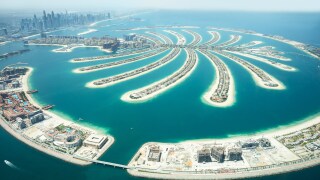The cable will span the North Atlantic connecting New Jersey and Denmark, with a branch connection to Ireland and Norway, the first of its kind for almost 20 years. The system is being build by a consortium of owner/operators, which includes Aqua Comms, Bulk Infrastructure, Google and Facebook.
“NJFX welcomes the HAVFRUE cable system to New Jersey as it represents one of the most significant cable systems to ever cross the Atlantic,” said Gil Santaliz, CEO for NJFX. “We are proud to be a part of this new subsea cable system as it furthers our goal to make New Jersey a strategic landing point for the world’s subsea deployments and serve as a major interconnection for global communications.”
HAVFRUE joins New Jersey’s already rich subsea capacity, although other systems have started to reach the end of its 20-year life cycle. Because of HAVFRUE’s ability to deliver superior speed and lower latency design, the economics of the other cables have started to become unviable. In addition, NJFX has also collaborated with carriers to build diverse fibre to its campus with carriers such as Altice, Crown Castle Fiber, Epsilon, Windstream, Zayo and Zenfi.
Including the HAVFRUE system, NJFX now has four cable systems landing at its campus comprising of TGN1, TGN2, Sebras and WALL-LI. As a result, HAVFRUE joins cables that interconnect Brazil, the UK and Caribbean from the same building, which is dedicated to interconnection to global networks with actual physical subsea cables.
At the start of the year TE SubCom was announced at the system supplier of the HAVFRUE cable. TE SubCom will integrate its Wavelength Selective Switching Reconfigurable Optical Add Drop Multiplexer (WSS-ROADM) for flexible wavelength allocation over the system design. Once operational the system will offer cross-sectional cable capacity of 108Tbps, which the company says, is scalable to higher capacities using future generation SLTE technology.






